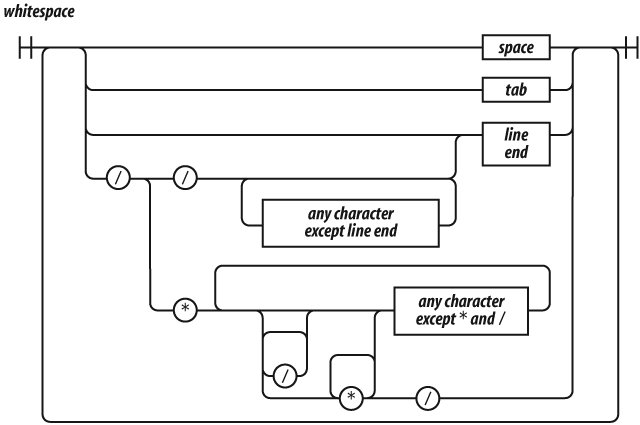Chapter 2. Grammar
I know it well: I read it in the grammar long ago.
This chapter introduces the grammar of the good parts of JavaScript, presenting a quick overview of how the language is structured. We will represent the grammar with railroad diagrams.
The rules for interpreting these diagrams are simple:
You start on the left edge and follow the tracks to the right edge.
As you go, you will encounter literals in ovals, and rules or descriptions in rectangles.
Any sequence that can be made by following the tracks is legal.
Any sequence that cannot be made by following the tracks is not legal.
Railroad diagrams with one bar at each end allow whitespace to be inserted between any pair of tokens. Railroad diagrams with two bars at each end do not.
The grammar of the good parts presented in this chapter is significantly simpler than the grammar of the whole language.
Whitespace

Whitespace can take the form of formatting characters or comments. Whitespace is usually insignificant, but it is occasionally necessary to use whitespace to separate sequences of characters that would otherwise be combined into a single token. For example, in:
var that = this;
the space between var and that cannot be removed, but the other spaces can be
removed.
JavaScript offers two forms of comments, block comments formed with /* */ and line-ending comments starting ...
Get JavaScript: The Good Parts now with the O’Reilly learning platform.
O’Reilly members experience books, live events, courses curated by job role, and more from O’Reilly and nearly 200 top publishers.

